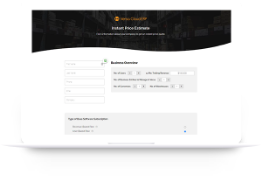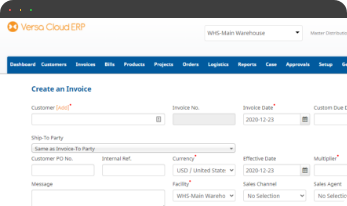Inventory Turnover Ratio in Versa Cloud ERP
This is guide for Versa Cloud ERP on How to calculate Inventory Turnover Ratio
What is the Inventory turnover ratio:
The inventory turnover is a financial ratio that calculates the number of times a company turned over/rotated over its inventory relative to its COGS (cost of goods sold) over a given period.
What can be included in the Inventory:
Inventory can include raw materials, goods work in progress, finished goods (with the intent to sell).
What does the inventory turnover ratio do for your business:
- The inventory turnover ratio tells the users how efficiently a business is using its inventory by dividing the COGS by the average inventory during the period.
- A low inventory turnover ratio indicates a sign of weak sales or excess inventory, on the other hand, a higher ratio indicates inadequate inventory stock.
- Also, it is important for businesses to consider accounting policies, changes in cost, and seasonal factors that may affect inventory turnover comparisons.
- Calculating the inventory turnover ratio helps the business make decisions in pricing, manufacturing, purchasing, and warehouse management.
Formula: Cost of goods sold/Average inventory
COGS= Beginning inventory + purchases + Freight In – Ending inventory – Purchase Discounts – Purchase Returns and Allowances.
Average inventory= (Beginning inventory + Ending inventory)/2
In Versa Cloud ERP the cost of goods sold is considered for the calculation instead of inventory for inventory turn over ratio because inventory only included the cost component and COGS included the markups of sales.
The average value of inventory in the formula is used to overcome the effects of seasonal sales.
A company can divide the days in the period, typically a fiscal year, by the inventory turnover ratio to calculate how many days it takes, on average, to sell its inventory.
How will a business define a good inventory turnover ratio?
Depending on the industry benchmark for a good inventory turnover ratio can vary. Industries stocking small to medium-value items tend to have a higher inventory ratio vs. industries selling medium to large-valued items, tend to have a lower inventory ratio.
However, the question remains is a high inventory turnover ratio good or bad?
In theory, businesses will always aspire for a higher inventory turnover ratio as the high inventory turnover ratio reduces the amount of capital tied up in the inventory.
However, there are exceptions to this. For example, businesses stocking high-value ticket items will have a lower inventory ratio because people do not buy a new car annually.
Therefore, there are differences in inventory turnover by industries. High-volume, low-margin industries tend to have high inventory turnovers. Conversely, low-volume, high-margin industries tend to have much lower inventory turnover ratios.
Example for calculating inventory turnover ratio:
In Versa Cloud ERP for calculating Inventory Turnover ratio consider the below example:
- Example 1
For consideration, let’s have a coffee retailer. Over the Q1 period, the retailer posted a COGS of $ 27,000 with an Average inventory of $ 5500.
The inventory turnover ratio will be= 27000/5500 which is 4.90
Now the business wanted to calculate how many days will it take for them to sell the inventory we just divide 365 days by the inventory turnover ratio which is 4.90 which will be equal to 74 days.
In the example above, we can see the business had a higher inventory turnover ratio as the value of the item for sale is smaller and it moves fast. This is also reflected in the inventory turnover days which is 74.
- Example 2
On the contrary, if we take a business that is into selling specialized audio equipment, with a COGS of $ 76000 and an average inventory of $ 23000 the inventory turnover ratio will be 3.30 (76000/23000).
This indicates a lower inventory turnover ratio. Also, the number of days the business will take to sell the inventory will be 110 days.
Given the nature of the product, as it is a high-value item it will not be purchased very frequently the ratio is low.
To know more, please visit our website or contact us directly.
In Versa Cloud ERP an Inventory Turnover Ratio is your businesses friend when a business wants to optimize the inventory rotation to ensure the capital or inventory are not locked in for an extend period of time.
Effectively manage your financials, inventory, and production workflows with our award-winning ERP.
Let Versa Cloud Erp’s do the heavy lifting for you.
Do Business on the Move!
Make your businesses hassle-free and cut the heavyweights sign up for the Versa Cloud ERP today!!
Join our Versa Community and be Future-ready with us.












